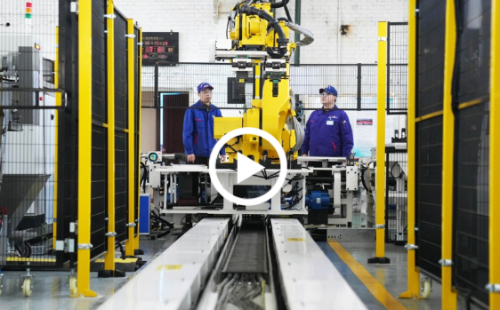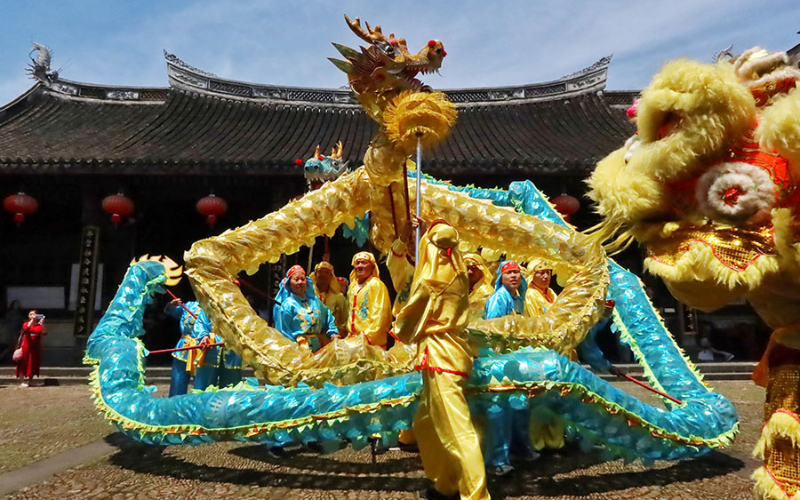Home is where the art is
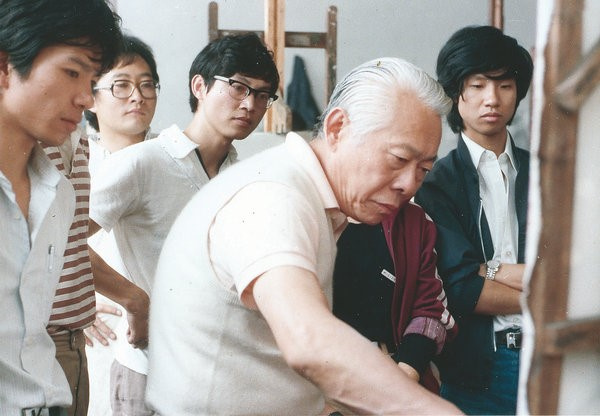
Zao Wou-Ki (front) teaches at his painting workshop in Hangzhou, Zhejiang province, in 1985. [Photo provided to China Daily]
Over eight decades ago, the artistic odyssey of Zao Wou-Ki, the internationally acclaimed Chinese-French painter, began in the enchanting city of Hangzhou, Zhejiang province, where his creativity took root and blossomed.
Now, on the 10th anniversary of his death, Zao's masterpieces have found their way back to their rightful home.
The Way Is Infinite: Centennial Retrospective Exhibition of Zao Wou-Ki opened at the Art Museum of China Academy of Art in Hangzhou last month, and will run until Feb 20.
Divided into six sections, the exhibition displays around 200 of Zao's most important works, including oil paintings, Chinese ink-wash paintings, watercolors, lithographs, painted porcelain and works of literature.
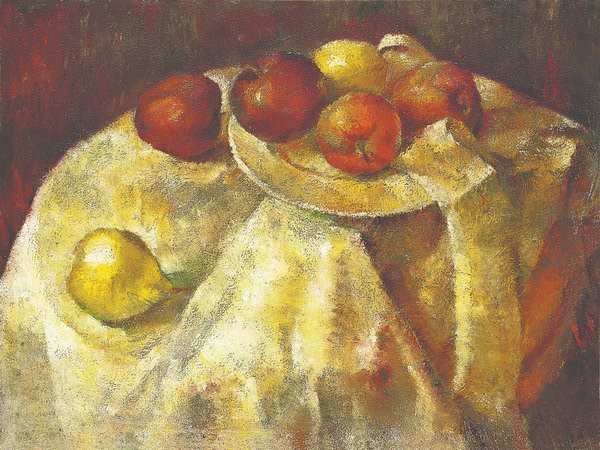
Untitled (Still Life With Apples), (1935-36, oil on canvas), by Zao. [Photo by Antoine Mercier/For China Daily]
As a significant cultural program, held as part of the 19th Asian Games Hangzhou, the exhibition is also linked with the 2024 China-France Year of Culture and Tourism, and a key project sponsored by the Zhejiang Culture and Art Development Fund.
It is hosted by the Ministry of Culture and Tourism, the China Federation of Literary and Art Circles and the Zhejiang people's government, and specially supported by the embassy of France in China, the embassy of China in France and the embassy of China in Switzerland.
A forum, The Way Is Infinite: Zao Wou-Ki's World of Art and a symposium, The Dream Quest of West Lake — Zao Wou-Ki 85 Workshop, were held at the China Academy of Art.
Gao Shiming, general planner of the exhibition and president of the China Academy of Art, says that Zao is not just a towering figure in the academy's lineage, but also a shining star of modern art history.
"His work bridges the gap between Eastern and Western cultural traditions, creating a modernist Eastern style that allows the underlying spirit of Chinese culture to flourish in the fertile ground of modern painting," Gao says.
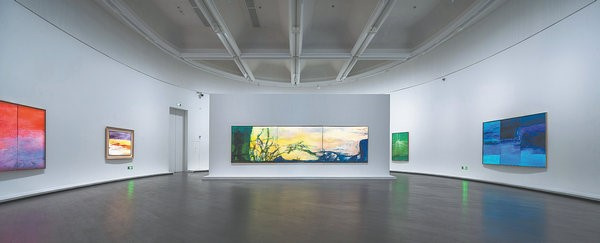
A view of The Way Is Infinite: Centennial Retrospective Exhibition of Zao Wou-Ki, an ongoing exhibition at the Art Museum of China Academy of Art in Hangzhou, Zhejiang province. [Photo provided to China Daily]
Zao's work has found a prominent place in the collections of 150 major museums and art galleries around the world, including the Centre Pompidou in France, the Tate Modern in the United Kingdom, and the Metropolitan Museum of Art and the Museum of Modern Art in the United States.
In 2017, Zao's 29.01.64 (1964) was sold for around HK $200 million (US $25.6 million) at Christie's in Hong Kong, setting a new record for his works and the world record for an oil painting by an Asian artist.
A year later, the insatiable enthusiasm for Zao once again astonished, driven by the auction success of his largest masterpiece to date.
His Juin-Octobre 1985, which is 280 centimeters by 1,000 cm in size, sold at Sotheby's Hong Kong, with the final price, after commissions, reaching a staggering HK $510 million.
This historic sale not only shattered the previous record for the most valuable painting ever sold at a Hong Kong auction, but also obliterated the world auction record for an oil painting by an Asian artist.
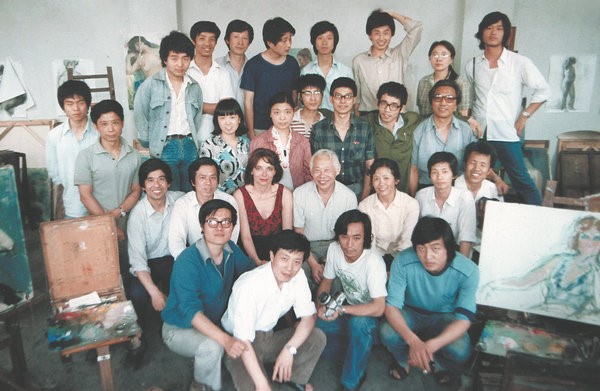
A group photo of Zao and those attending his workshop. [Photo provided to China Daily]
Born in Beijing in 1920, Zao gained admission to the Hangzhou National College of Art (now known as the China Academy of Art) in 1935, and following his graduation in 1941, took up a role as an instructor at the institution.
He received a traditional Chinese education and training in calligraphy from childhood. While studying at the Hangzhou National College of Art, he embraced the artistic principles of Lin Fengmian and Wu Dayu, which blended Eastern and Western influences, and was deeply influenced by impressionism, as well as paintings by Cezanne, Matisse and Picasso.
"I sought to express movement, its slow, haunting motion, or its dazzling flashes. I wanted to make the surface of the canvas vibrate thanks to contrast, or the quivering of a single color," Zao once said.
In 1948, he left for France to pursue further studies. When he arrived in Paris, his paintings were still expressions of life memories. However, in 1951, while living in Switzerland, he saw the paintings of Paul Klee, which led to an epiphany about the creative potential of traditional Chinese culture. Inspired by oracle bone scripts and bronze inscriptions, he used imaginary characters as compositional elements to create form and space in his paintings.
In 1985, the Ministry of Culture invited Zao to return to his alma mater to host the Zao Wou-Ki Painting Workshop, which enabled him to pass on his painting experience and insight, contributing to contemporary Chinese art and art education.
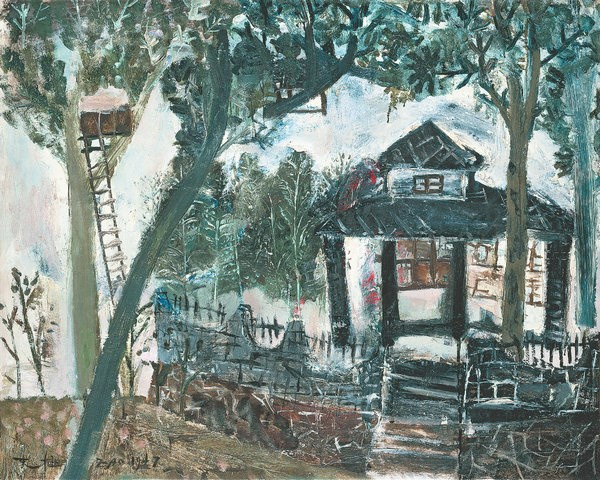
My Home in Hangzhou(1947, oil on canvas), a painting by Zao. [Photo provided to China Daily]
Xu Jiang, general adviser of the exhibition, recalls that, in the summer of 1985, he studied with Zao at his workshop for a month.
Reminiscing about his time spent at the workshop, Xu says he will cherish the candid conversations students shared with Zao, while seated around him during the breaks between sketching sessions.
"He was a man of few words, but the main point he tried to make was that we needed to learn from the outstanding traditions of our nation, from the first-rate masters across the world, and that we should combine both aspects and inject our own individual traits. Only in this way would we be able to naturally integrate every aspect in order to form our own style, which should not be local, but rather global," Xu says.
He remembers that Zao once said, "When you start to paint, you might as well forget everything, just like when meditating. Allow your emotions and personality to rise to the surface and connect to the painting through your hands. A painting needs to breathe just as much as a person."
Since 1958, Zao's works were mostly titled by the date they were completed. Xu thinks they can be seen as journals of his circumstances. "There was homesickness, bereavement, anxiety and despair in these works," Xu says.
In the spring of 1989, Xu and several classmates from the academy workshop paid Zao a visit at his Parisian home.
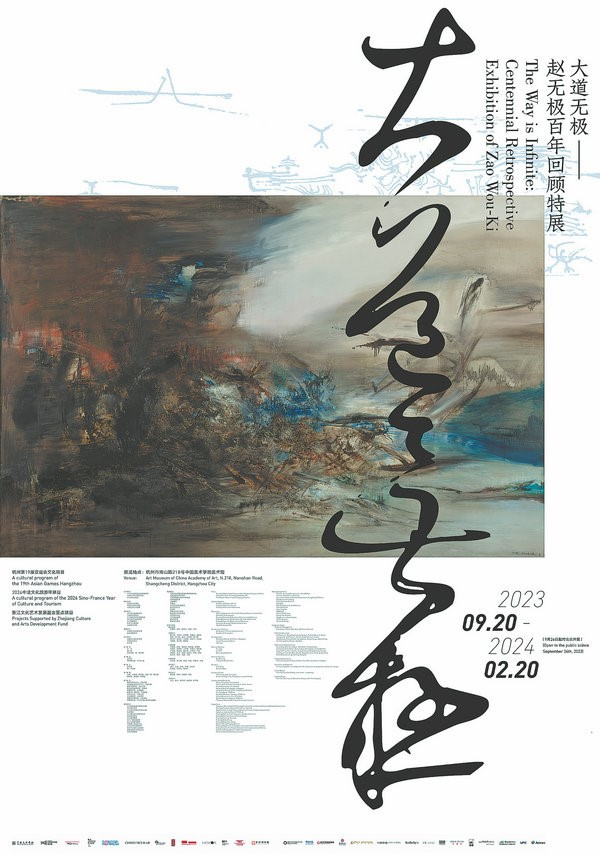
A poster for the exhibition. [Photo provided to China Daily]
"Zao pointed at his well-insulated studio and told us that he was always caught up in a struggle there," Xu says.
"Sometimes, a large painting fell on him, which trapped and 'buried' him for as long as 10 minutes," Xu recalls, adding that Zao's sincere pursuit of great art was "a kind of indulgence during the journey of his soul".
In recognition of his exceptional contribution, Zao was honored with lifelong membership of the Academie des Beaux-Arts in Paris in 2002. He passed away in Switzerland in 2013.
For Gao, Zao's later work became more unadulterated, similar to the purity that modernist poets advocated. "In his later years, Zao's free, optimistic and careless state of mind manifested itself in a more tranquil, spiritual, glorious and noble expression in his paintings," he says.
Gao recalls that Zao once said that everybody is bonded by one tradition, while he, by two. "His art embodies Chinese and Western cultural traditions," Gao explains, adding that Zao deftly navigated the waters of ancient, modern, Eastern and Western art, serving as a cultural bridge between Chinese classics and Western modernity.
"Painting was as natural and indispensable to him as breathing," Gao says.


